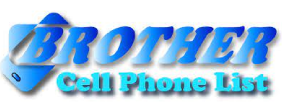Crafting the Perfect Lead Generation Form: A Comprehensive Guide
A lead generation form is the digital gateway to converting website visitors into potential customers. Its design, placement, and the information it collects significantly impact conversion rates. This guide delves into the art and science of crafting effective lead generation forms.
Understanding the Purpose of a Lead Generation Form
Before diving into design, it’s essential to clarify the form’s objective:
- Data Collection: Gathering essential contact information for future marketing and sales efforts.
- Lead Qualification: Collecting information to determine a lead’s suitability (e.g., industry, company size, budget).
- Customer Insights: Understanding customer preferences, needs, and pain points for product/service improvement.
Key Elements of a High-Converting Lead Generation Form
- Clear and Concise Headline: Grab attention with a compelling headline that explains the form’s purpose and benefits.
- Strong Call-to-Action (CTA): Use persuasive language and create a sense of urgency to encourage form submission.
- Relevant Fields: Only request essential information. Too many fields can deter users.
- Progress Indicator: For longer forms, display a progress bar to keep users engaged.
- Thank You Page: Direct users to a confirmation page with relevant content or offers.
Lead Generation Form Best Practices
- Keep it Short and Sweet: The shorter the form, the higher the conversion rate. Prioritize essential fields.
- Optimize for Mobile: Ensure your form is responsive and user-friendly on different screen sizes.
- Use Progress Bars: For longer forms, progress bars encourage users to complete the form.
- Test and Iterate: Experiment with different form designs, lengths, and field combinations to optimize performance.
- Offer Incentives: Provide a valuable incentive (e.g., ebook, discount) to encourage form completion.
- Build Trust: Display trust badges, security certificates, or privacy policies to reassure users.
Lead Generation Form Examples
Here are some common types of lead generation forms:
- Contact Form: Collect basic contact information (name, email, phone number).
- Newsletter Signup Form: Capture email addresses for email marketing campaigns.
- Webinar Registration Form: Gather attendee details and preferences for targeted follow-ups.
- Product/Service Demo Request Form: Collect information for product demonstrations or consultations.
- Free Trial Signup Form: Capture contact information for trial offers.
- Survey Form: Gather feedback and insights from customers or prospects.
Lead Generation Form Placement and Timing
- Above the Fold: Place forms prominently on your website’s homepage or landing pages.
- Pop-ups and Exit-Intent Pop-ups: Capture attention with strategically timed pop-ups.
- Embedded Forms: Integrate forms into content to capture interest at specific points.
Tips for Increasing Lead Generation Form Conversions
- Use Clear and Concise Language: Avoid jargon and technical terms.
- Create a Sense of Urgency: Use phrases like “limited time offer” or “early bird discount.”
- Offer Multiple Contact Options: Provide options like email, phone, or social media for contact.
- Personalize the Form Experience: Use conditional logic to tailor questions based on previous answers.
- A/B Test Different Form Variations: Experiment with different designs, layouts, and CTAs.
Lead Generation Form Examples by Industry
The specific fields and design of a lead generation form can vary based on the industry. Here are some examples:
- E-commerce: Name, email, shipping address, preferred payment method.
- B2B: Company name, job title, industry, company size, budget.
- Healthcare: Patient name, contact information, insurance provider, medical history.
- Education: Name, email, educational background, program interest.
Conclusion
A well-crafted lead generation form is a powerful tool for converting website visitors into valuable leads. By understanding your target audience, following best practices, and continuously testing and refining your forms, you can significantly improve your lead generation efforts. Remember, the ultimate goal is to create a seamless and user-friendly experience that drives conversions and nurtures long-term customer relationships.
Would you like to explore specific lead generation form examples for a particular industry or niche?

